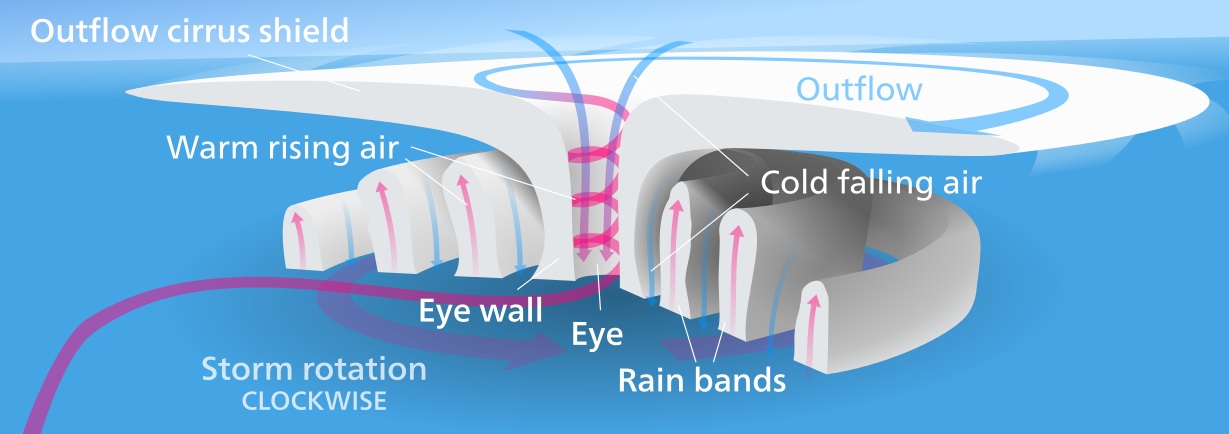1999 Odisha Cyclone was termed as a super cyclone. It was one of the most intense tropical cyclones. This article will provide you with the NCERT notes on Tropical Cyclones as an aid to the IAS Exam preparation.
These notes will also be useful for other competitive exams like Bank PO, SSC, state civil services exams and so on.
For more on UPSC Geography preparation, check the following links:
| Cyclones | NCERT Notes on Extra-Tropical Cyclones |
| Bomb Cyclones | Cyclone Disaster Management |
| Cyclone Nivar | Amphan Cyclone |

What is a tropical cyclone?
- Tropical cyclones are regarded as one of the most devastating natural calamities in the world.
- They originate and intensify over warm tropical oceans.
- These are ferocious storms that originate over oceans in tropical areas and move over to the coastal areas causing violent winds, very heavy rainfall, and storm outpourings.
Names of cyclone in different regions
They are known as:
- Cyclones in the Indian Ocean
- Hurricanes in the Atlantic
- Typhoons in the Western Pacific and the South China Sea
- Willy-willies in Western Australia
Also, read:
| Types of Winds | List of Major Local Winds |
| NCERT Notes on Earthquake | Thunderstorms |
Conditions for the formation of Tropical Cyclone
The conditions that favour the formation and intensification of tropical cyclone storms are:
- Large sea surface with a temperature higher than 27° C
- Presence of the Coriolis force
- Small differences in the vertical wind speed
- A pre-existing weak- low-pressure area or low-level-cyclonic circulation (Learn about the atmospheric pressure in the linked article.)
- Upper divergence above the sea level system
You may read about the forces affecting the wind mentioned in the linked article.
Formation of Cyclone
- The energy that strengthens the storm comes from the condensation process in the towering cumulonimbus clouds, surrounding the centre of the storm.
- With an uninterrupted supply of moisture from the sea, the storm is again strengthened.
- On reaching the terrestrial region the moisture supply is cut off and the storm dissipates.
- The place where a tropical cyclone cuts the coast is called the landfall of the cyclone.
- A landfall is frequently accompanied by sturdy winds, heavy rain and mounting sea waves that could threaten people and cause damage to properties.
- Cyclones which cross 20 degrees North latitude are more destructive.
- They cover a larger area and can originate over the land and sea whereas the tropical cyclones originate only over the seas and on reaching the land they dissipate.
Related links:
| Types of Clouds |
| NCERT Notes on Latitudes and Longitudes |
Eye of Cyclone
A mature tropical cyclone is characterised by the strong spirally circulating wind around the centre which is called the eye.
- The eye is an area with calm weather descending air.
- It is characterized by light winds and clear skies.
Eye Wall
- Around the eye is the eyewall, where there is a strong spiralling rise of air to a greater height reaching the tropopause.
- The wind reaches maximum velocity in this region and torrential rain occurs here.
- From the eyewall, rain bands may radiate and trains of cumulus and cumulonimbus clouds may drift into the outer region.
Tropical Cyclones (UPSC Notes):- Download PDF Here
For comprehensive notes on Tropical Cyclones for UPSC, one may check the linked article.
UPSC Books List PDF:-Download PDF Here
UPSC Preparation
material and stuff of byjus is very nice